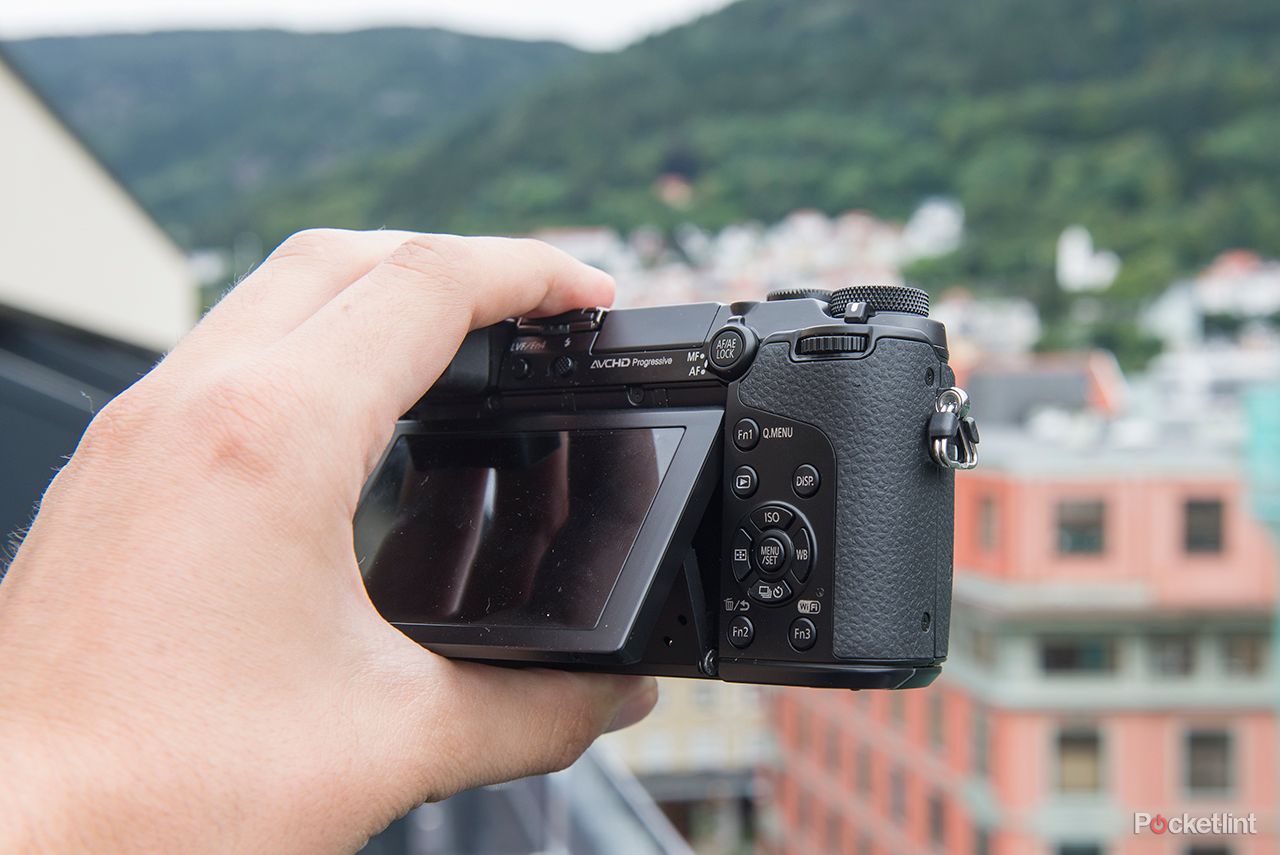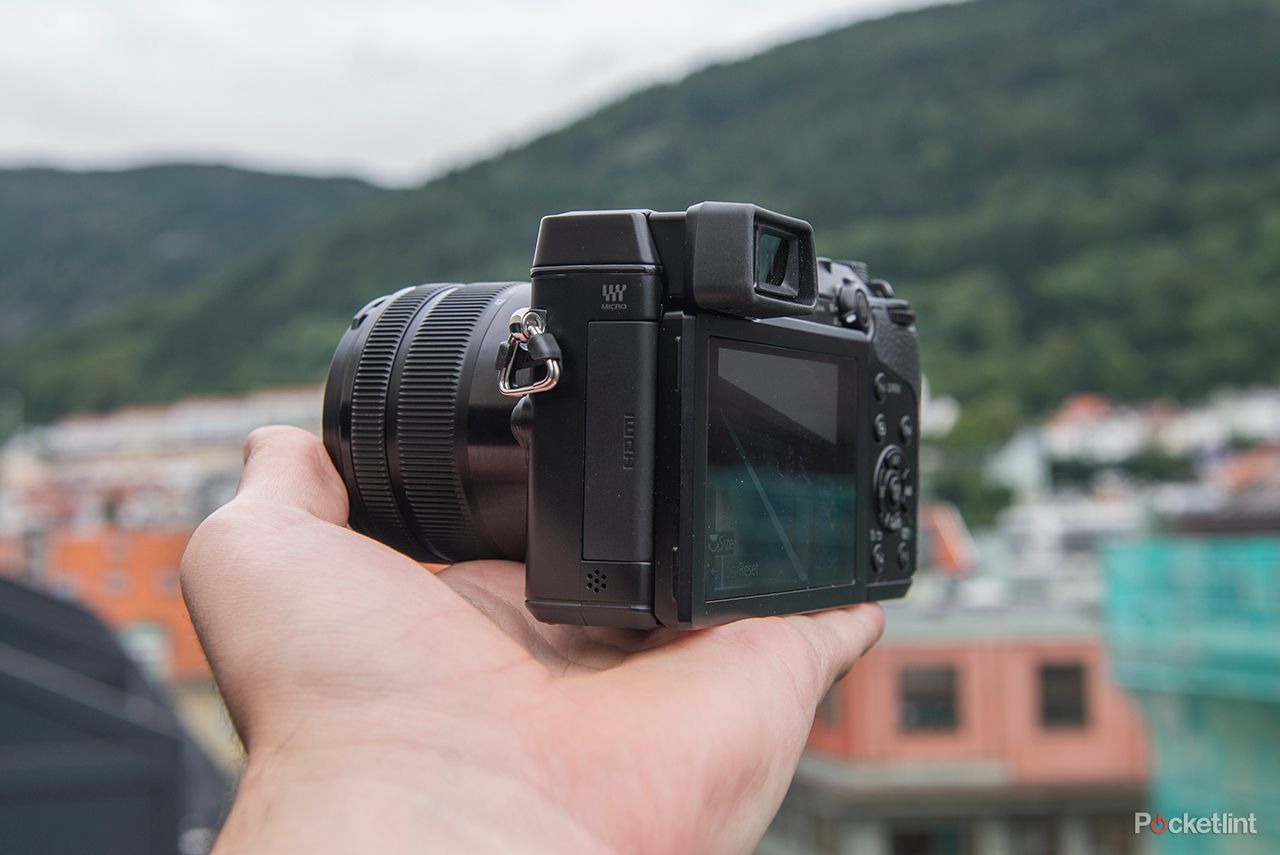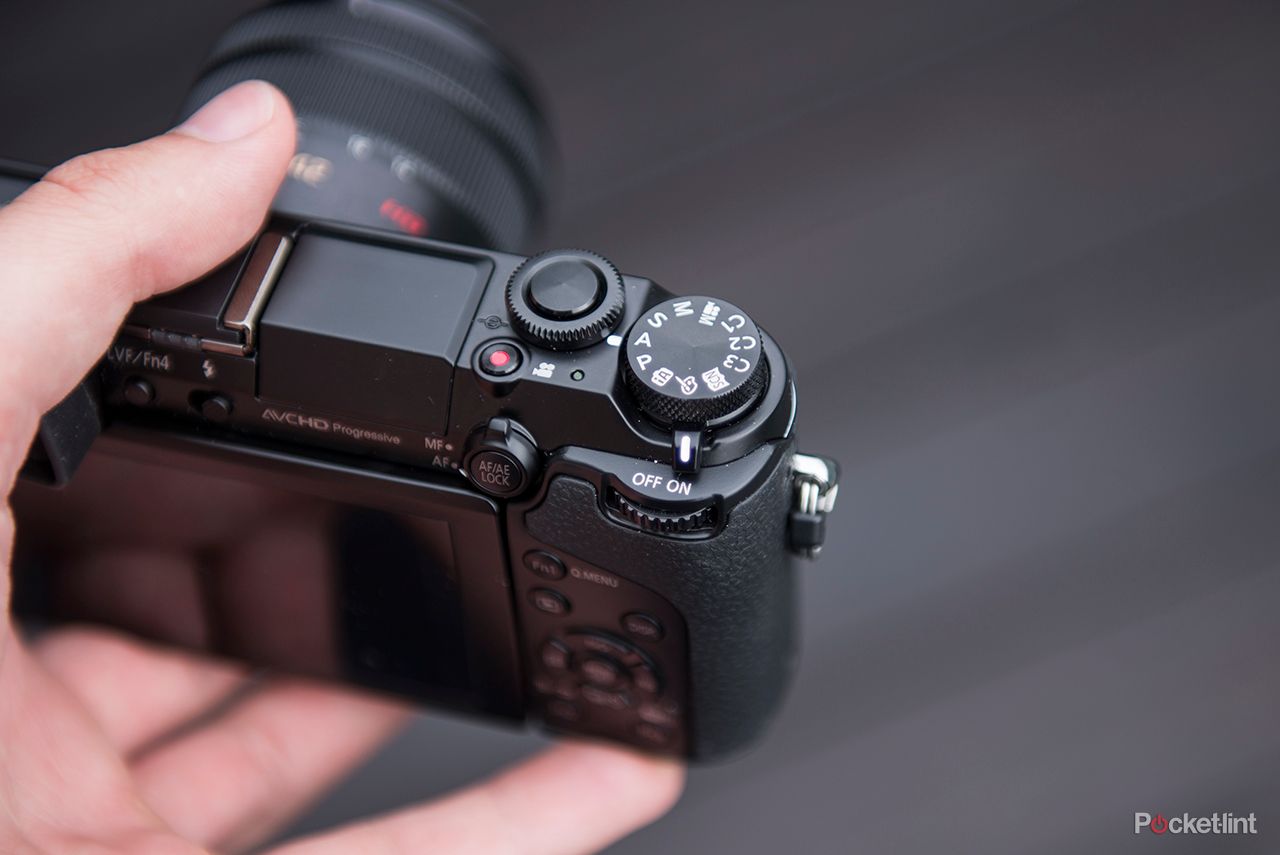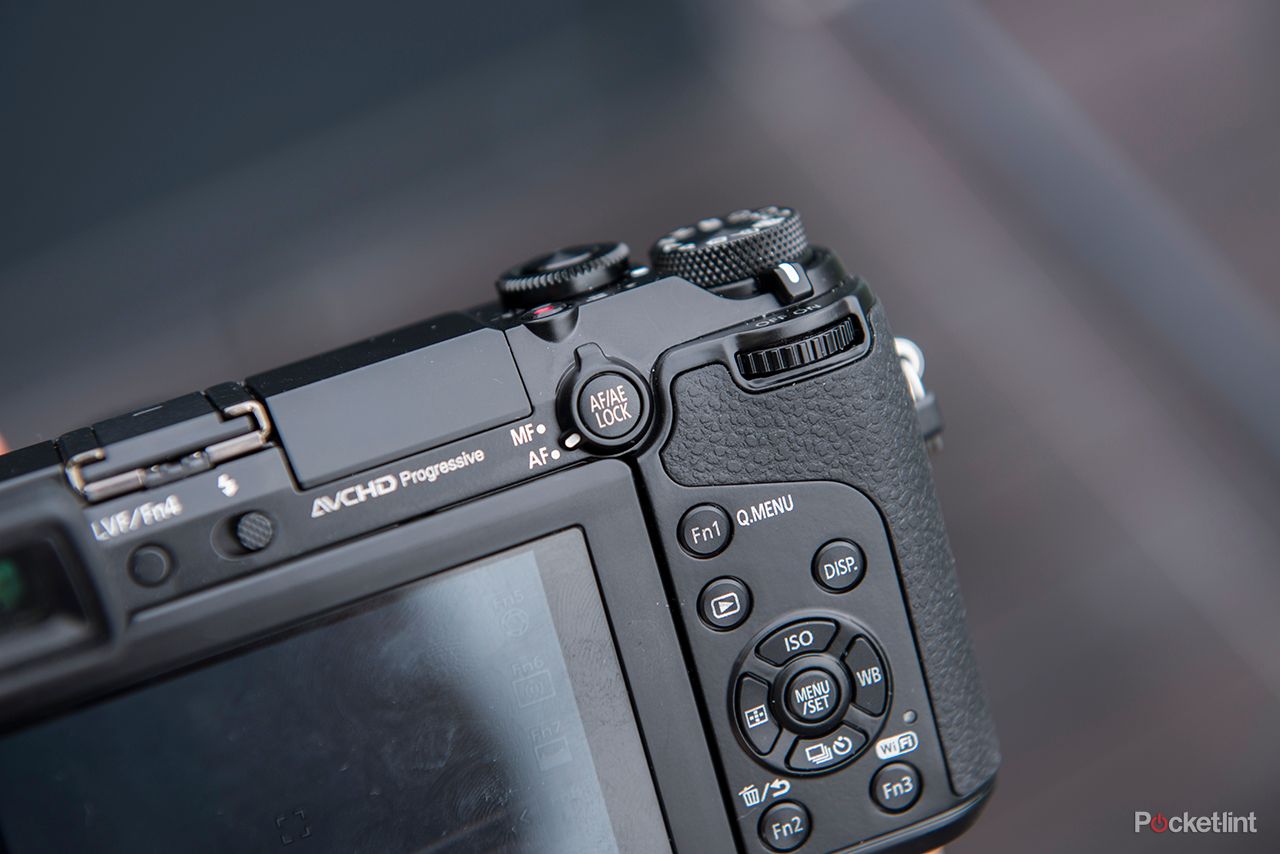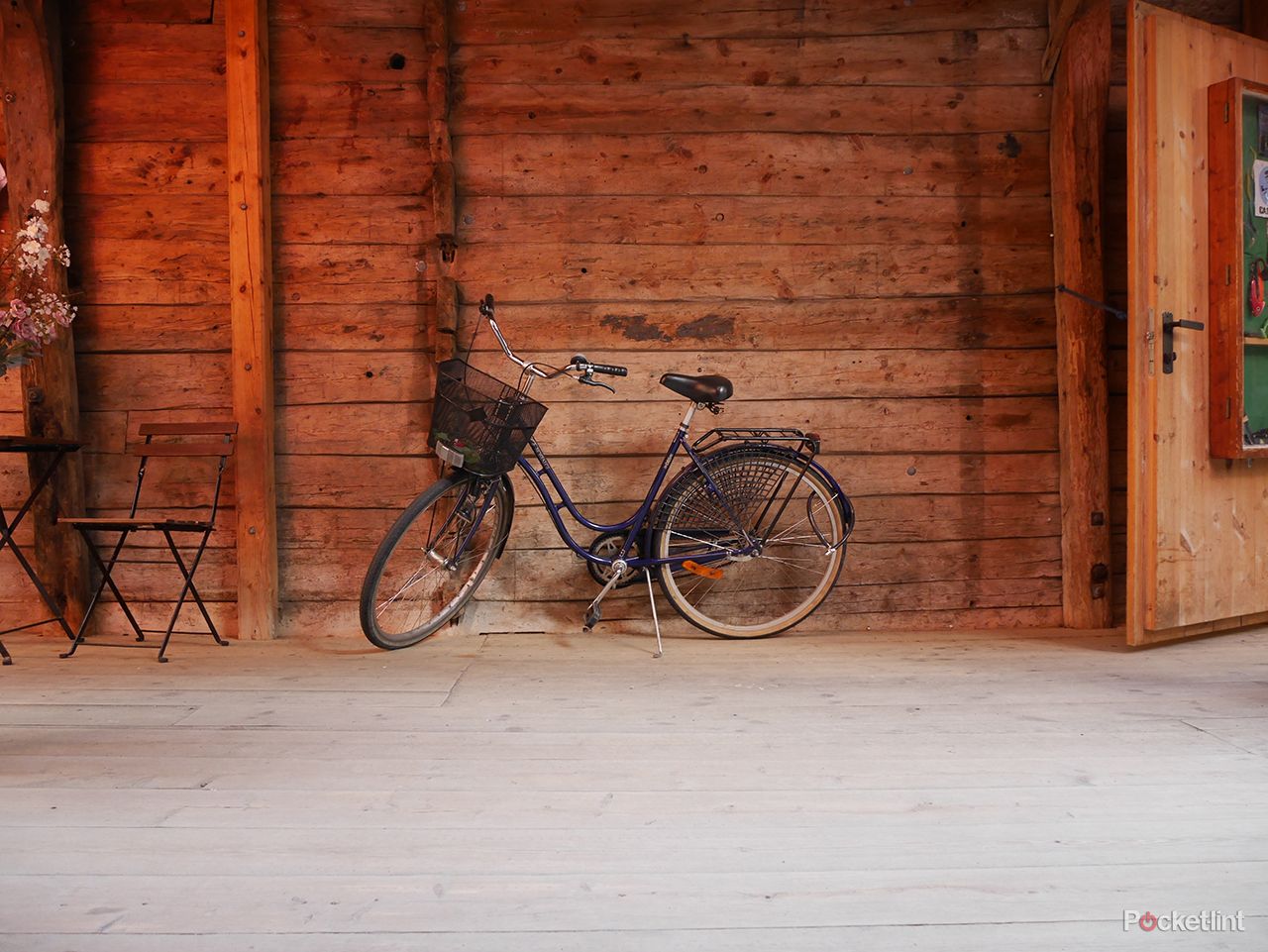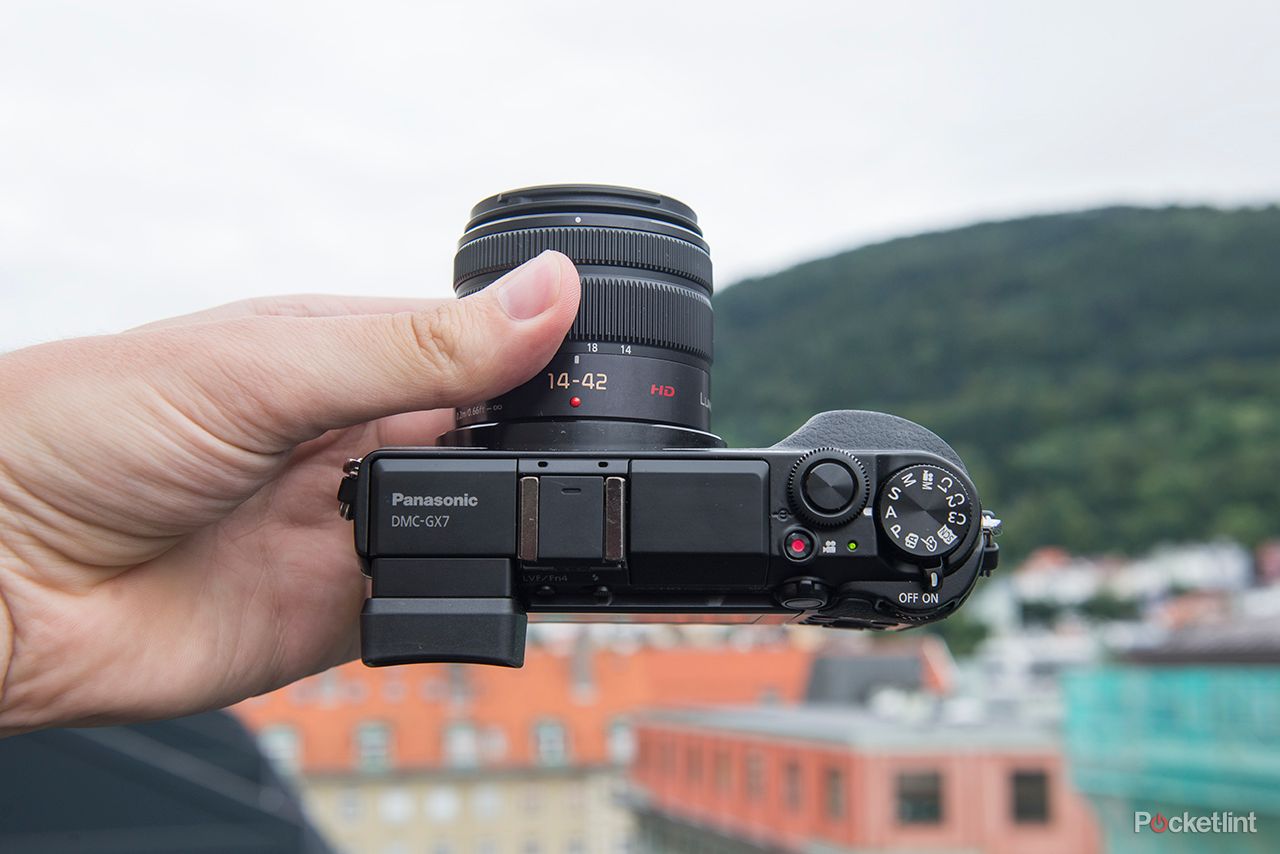The Panasonic Lumix GX7 immediately took up the "most wanted" position in our desirable compact system cameras list when it was announced earlier this year. How's that for hype? But it's hype with reason: the GX7 comes complete with a brand new Micro Four Thirds sensor, has a built-in tilt-angle electronic viewfinder that has minimal impact to the camera's size, and all the bells and whistles features that advanced photographers will want.
Our quick take
The Lumix GX7 is the package deal. It's bursting with features, it's a pleasure to use and it produces some excellent shots. Pro-spec features such as a 1/8000th sec maximum shutter speed and that tilt-angle viewfinder further bolster the package deal that, straight of of the box, is unlike anything else out there on the market.
Only there is one strong competitor that can't be overlooked: the Olympus E-P5. Out of the two models we think the E-P5 is the better looking and it even produces images with preferable processing and less noisy raw files to our eyes. But - and here's the clincher - add a VF4 viewfinder on to the Olympus model and watch the price tag soar. It's the do-it-yourself trip of a lifetime that'll inevitably cost more. And herein lies one of the GX7's most appetising features: its £899 price-point. Yes it's not cheap but for what you get it's well worth it. If money were no object then we'd pick out the E-P5 each and every time - but when there's little cash lining those pockets the price-point becomes of crucial importance. We also prefer the layout, menus and customisability of the Panasonic, which also carries plenty of weight when it comes to general functionality.
In true Panasonic fashion the GX7 ticks plenty of boxes. But beyond feeling solely functional, this Lumix has soul too; it successfully flirts with the current design trends and pulls it off. It feels luxury, it feels exciting and it definitely feels worthy of the hype. There are shortcomings as we've detailed, including so-so battery life, but considering the feature set and the price-point the Lumix GX7 is up there among the compact system camera greats. It's got every base covered - and covered well.
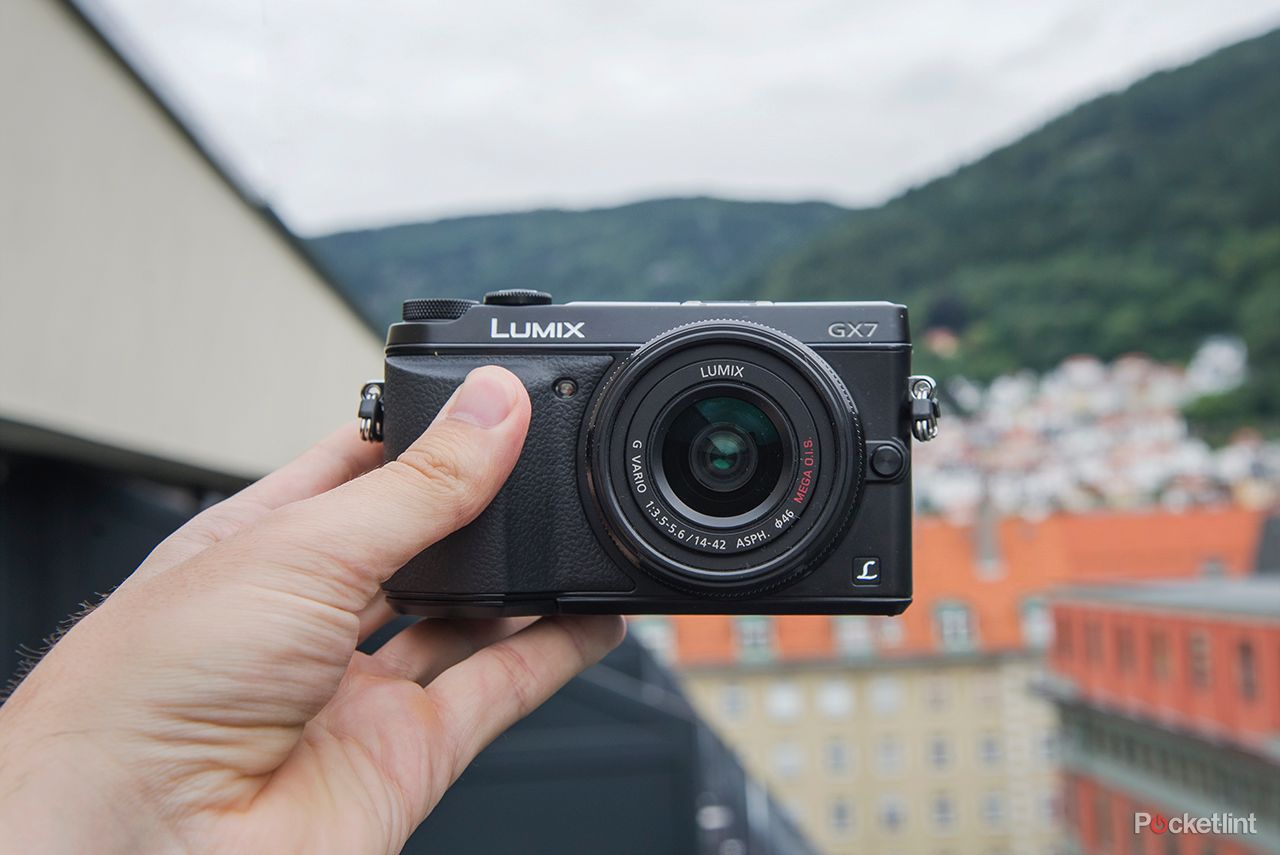
Panasonic Lumix GX7 - 4.5 / 5
| FOR | AGAINST |
|---|---|
|
|
Panasonic Lumix GX7
But with a sensor size that's smaller than much of the competition, is the GX7 the camera to carve out an on-par space for Panasonic's G-series when it comes to image quality? We've been using the Lumix GX7 out in the real world in all manner of conditions - from the fjords of western Norway to dim-lit aquariums and beyond - to see if it can deliver that next level experience. Does the Lumix GX7 match up to the hype?
Full tilt
On the face of it the GX7 appears to be a souped-up GX1, but 18-months on from the earlier model's release date and it's not just a case of a little tweak here and a tiny adjustment there: the GX7 is an entirely different beast that's been built from the ground up. That probably explains why there's no GX2 or other number models - whether consciously or unconsciously it seems to signify Panasonic's feature-set leap from one model to the next. And seven is better than one, right?
Panasonic has gone in deep with the GX7. It's got a long list of features, among the most standout of which are the tilt-angle electronic viewfinder (EVF) and rear touch-panel LCD screen. The EVF sits horizontal on the body but can be angled through to 90 degrees to face directly upwards, while the LCD screen can face 90 degrees upwards or 45 degrees downwards. It's a tilt frenzy. And we like it.
The EVF is generally no slouch either: not only is it a rarity among compact system cameras, it's the first built-in one we've seen with a tilt-angle mount, and its 2,760k-dot resolution isn't mucking around. But it's not quite perfection as some ghosting during movement sees subjects blur in preview; move particularly quick when tracking and we even saw red and green fringes temporarily spill out around some subject edges. There's another ongoing issue too: the eye-level finder takes around half a second to activate, before which the EVF is blacked-out to save on battery life. Even with the rear LCD screen switched off there's still a delay in EVF activation.
But when steadied the EVF's resolution has plenty to shout about and its 100 per cent field-of-view ensures that what you see is what you get in the final frame. Overall there are more pros than cons and while it might not be as responsive as an OLED finder the colour gamut in this particular LCD panel is far more lifelike.
The camera's 3-inch rear LCD has held up well during our testing too. Its 1,040k-dot resolution is about as high as you'll find in any dedicated camera, while the electrostatic touch-panel - it's the same screen as found in the Lumix G6 - is the most responsive we've used to date. Sunlight can cause occasional issues with visibility, but not awfully so and, thanks to the EVF, that's a limited issue.
READ: Panasonic Lumix G6 review
If anything, one of the LCD screen's biggest plus points is simultaneously one of its weaknesses: that responsive touchscreen. It's all too easy to activate accidentally, which typically moves the autofocus area to somewhere that you won't want it. Whether that's by the bulk of a hand, an accidental knock or - and specifically with this model - a nose or cheek touching the screen when lifting the camera to the face, we found it happened all too often.
Panasonic Lumix GX7 review - sample image at ISO 200 - click for 100 per cent raw crop
We've been thinking through this issue as it's more prolific in the GX7 given the EVF placement. The immediate solution, which we found ourselves opting for all too often, is to switch off the touchscreen controls altogether. But doing so can feel limiting. An option we'd like to see is for Panasonic to offer a limited active are of the toucshcreen. At present the GX7 offers full edge-to-edge selection across the entire screen - which is potentially great - but that is either on or off. If there was an option to deactivate this outermost-edge - whereby menus would have to be accessed using the physical keys only and the touch interface for focus point control only - we think it might end up being certain photographers' best friend. Just a thought.
Bells and whistles
Okay so there aren't actual bells or whistles on board. But the GX7 is adorned with a huge variety of controls. From the quartet of physical programmable function (Fn) buttons and five additional touchscreen virtual Fn buttons, each of the total nine Fn access points can be set up to control whichever settings you want from an extensive 37-strong list in each instance. The GX7 sure has got you covered. Set it up how you want it and use it how suits you best.
But that doesn't affect the fairly typical G-series layout. The Fn1 button defaults to load up a quick menu which presents 12 options on the screen - each can be selected via the touchscreen or by using the d-pad. This adds yet another layer of depth to the quick-access settings so nothing is ever far from your reach. It's advanced, yet not complicated. And once you've set it up how you'd like it it's spot on in use.
Elsewhere within the design there's an AF/MF (auto/manual focus) switch and AF/AE (autofocus/auto-exposure) button lock, plus a physical mode dial and dual thumbwheel set-up for selecting the mode and adjusting manual settings respectively.
In the hand the GX7's magnesium alloy construction feels like a sturdy wedge and all the on-board controls fit well in their given positions. The top thumbwheel has taken a tip out of the Olympus OM-D E-M5's book in style terms, as it's fully exposed and sitting directly on top - but this doesn't affect its practicality by any means. The camera also comes complete with a deep-grooved grip that's a perfect match for three fingers. We did find the fourth finger to slip under the body, but the camera body still nestles well in this position, and part of this model's prospect is its small scale.
READ: Olympus OM-D E-M5 review
In addition to the all-black model that landed in the 'Lint offices for review, there's also a model with a silver-like top which, for us, is the preferable finish of the available pair. It's Panasonic going down the same line as other camera manufacturers and looking to push that modern-retro fashion, a la Olympus and Fujifilm.
Overall the GX7 is a serious customer. Detailed finish, good looks and high quality are wrapped up into an attractive yet functional package. It might not ooze the immediate coolness of something like the Olympus Pen E-P5 - which is a lovely thing indeed - but Panasonic's gone and squeeze in more functionality friendliness.
READ: Olympus Pen E-P5 review
In focus
We've put the GX7 through its paces in testing. From shooting the fjords of western Norway, through to dim-lit street statues and other tricky low-light conditions such as aquariums. It's been a revealing process with lots of highs and just a couple of lows.
Key to the GX7 is its "Light Speed AF" autofocus system that - and just like other G-series models - offers up among the fastest automatic focus going. And it really is knock-out fast. Near instant focus is available in all but the most pressing of conditions. The only near contender for the autofocus crown is the aforementioned Olympus E-P5, but choosing a winner between these two is a tough call.
Panasonic Lumix GX7 review - sample image at ISO 200 - click for 100 per cent JPEG crop
Autofocus can be set to single (AF-S), continuous (AF-C) and the half-way house automatic (AF-F). Finding a focus point and acquiring a sharp shot wasn't a problem throughout use, and the ability to tap the screen to specify the focus area and then adjust the size of that area by using the rear thumbwheel makes light work of most scenes.
If the viewfinder is your preferred point of use, however, then do note that by default the screen will remain inactive. If you want to move the active focus area - if that's the AF area mode you happen to be using - then you'll need to turn on the "Exact" option from the "Touch Pad AF" options within the menu. Great stuff - something that we hadn't initially spotted, but are very pleased to see available.
Continuous autofocus suffers the all-too-familiar ongoing limitations that we've experienced in not only Panasonic's G-series but from all compact system camera manufacturers right across the board. Fast-moving subjects can be successfully tracked using subject tracking AF - ie, the camera knows where to position the focus area to follow the subject, but the actual autofocus isn't swift enough to maintain the same frequency. When shooting fish behind glass in an aquarium this was exactly the case and resulted in focus hesitations that cost a number of shots. If the light was better then the GX7's other features - including its 1/8000th sec maximum shutter speed - go some way to compensate, even if it would mean pre-focusing and crossing fingers. It's far from incapable, but continuous autofocus still doesn't feel advanced enough to us.
Panasonic Lumix GX7 review - sample image at ISO 5000 - click for 100 per cent JPEG crop
Low light is no problem though, which is always a plus point that plenty of buyers want to hear about. Unlike some competitor systems - such as the Sony NEX series' inability to use a specified focus area when there's what it deems as too little light - the GX7 was able to focus on any given situation we threw at it. Well, with the exception of subjects being too close-up - but nothing can be done about that as it's dependent on the attached lens in use.
Throughout this review we stuck with the provided 14-42mm f/3.5-5.6mm lens that comes complete with optical image stabilisation. It's fine enough but doesn't always show off the GX7 to its fullest ability. It also raises another interesting point about the GX7's inclusion of sensor-based image stabilisation - the camera can auto-select between the in-lens system or utilise the sensor-based mode for lenses without stabilisation on board. That'll appeal to those considering utilising an adaptor alongside lenses outside of the Micro Four Thirds range.
The 14-42mm lens does lend itself well to manual focus shooting too, and the GX7 has seen definite progression in this area. A quick flick of the AF/MF switch on the rear sets either auto- or manual-focus into play, while an inter-menu setting, once activated, allows for manual focus override. Here it's possible to manually tweak focus and there are two points that make this all the easier: a focus-area-dependent magnification box which pops up on the screen to show a 10x magnified preview; and what's known as focus peaking. The latter shows up in-focus highlights as a bright colour, such as blue, to confirm that they're in focus. It's aperture-dependent (to a point) in order to assist with depth-of-field focus and it all works rather swimmingly.
Panasonic Lumix GX7 review - sample image at ISO 200 - click for 100 per cent raw crop
As well as the usual list of multi, centre only, user-defined single point, subject tracking and face priority autofocus area types, one of our favourite autofocus modes - pinpoint AF - has also seen a GX7 refresh. The crosshair-like autofocus pin-point now magnifies the focus area in a smaller box shown up on screen. It's also possible to independently position the auto exposure area as separate crosshair to differentiate exposure and focus. A great touch. Thing is, despite apparent betterment, we preferred the older version for one simple reason: in the GX7 pinpoint AF requires a double tap of the screen to reposition the focus point. Urgh. As precision touchscreen accuracy on a screen like this can be a little tricky, it makes for a less accurate user experience - and a slower one. We'd much rather have a single tap method, then all the new additions would be all the more welcome.
Image quality
We've been shooting high and low - quite literally from mountain tops and down to sea-level, as well as throughout the GX7's ISO 200-25,600 sensitivity. No ISO 100 option is a shame, but that's somewhat commonplace in these camera types, yet the addition of a 1/8000th sec shutter speed goes some way to compensate for this. Previous G-series models have come equipped with ISO 160, whereas the GX7's "extended" ISO 125 option is a signifier of yet something else: a brand new sensor. Panasonic has been bigging up this latest addition to the series, touting a -6dB noise reduction compared to even the GH3's sensor. But just how good is this new slice of 16-megapixel silicone and do those numbers convert to a meaningful step up in image quality?
Arguably there's a slight stigma attached to the Micro Four Thirds sensor. As it's smaller than the likes of the Sony NEX and Samsung NX series, Panasonic has had to push big claims in the GX7. Typically the size means Micro Four Thirds won't perform as well at higher ISO sensitivities as larger competitors. Now we're not saying that the GX7's high-ISO shots are the very best out there - after all, there are epic DSLR cameras and more on the market - but we've been generally impressed with how good everything looks for the most. Bright, colourful and sharp JPEG shots at the low-mid sensitivities are a definite plus.
Panasonic Lumix GX7 review - sample image at ISO 1000 - click for 100 per cent raw crop
But there are caveats: auto exposure can throw things more than a little off - we found frequent overexposure of around 0.7EV was a problem in a large number of our shots - and when shooting raw the GX7's shots not lack the same definition as something like the Olympus E-P5, they also reveal a lot more colour noise. So, yes the GX7 can produce good quality images, but to give it context it's not ahead of where Olympus has managed to push to.
When everything is on point, however, there's loads to like. Part of this is down to the GX7's full-on feature set - we used the waist-level tilt-angle screen and viewfinder on numerous occasions with great preview and feedback in both modes. Like any camera, the GX7 is a tool; and an enabler at that.
Panasonic Lumix GX7 review - sample image at ISO 20,000 - click for 100 per cent JPEG crop
We've taken a good look at shots at their full 16-megapixel scale and they do reveal signs of processing that has some impact to quality from around the ISO 800 mark. Or thereabouts. Here detail areas show up slight processing artefacts. This increases as the ISO sensitivity rises, but when JPEG snaps with five-figure ISO sensitivities are still apparently passable - despite heightened processing and softness - we can only put our thumbs up. Sure, ISO 25,600 is an unwarranted push in our opinion, but it puts the figures on the page.
Like we say, raw files haven't drawn that extra detail out as we'd hoped. If anything it shows how sharpened JPEG files are compared to their raw counterparts, and the colour noise that seeps in even at mid-level ISO sensitivities - mid-greys show up colour noise in ISO 640 examples - is a little disappointing. But it's the raw, untouched data - if you've got a decent post-production plan then there's plenty here to play with.
Panasonic Lumix GX7 review - sample image at ISO 640 - click for 100 per cent raw crop
We suspect that a better lens than the 14-42mm will draw yet more out of the GX7. In our experience with the earlier pre-production model - which we took around Longleat safari park - we took some sharp pictures and while we've still nabbed some great shots with the final production model, that lens isn't as bitingly sharp as we'd like.
There's a stack of detailed adjustments and in-camera processing available too. From the new black and white mode, which comes complete with colour filter effects of red, yellow, blue and other colours for that distinct B&W finish, through to a shadow and highlight gamma curve tool. It's even possible to apply in-camera effects when raw & JPEG shooting is selected and that means the raw file original is always there as a back-up.
Panasonic Lumix GX7 review - sample image at ISO 5000 - click for 100 per cent JPEG crop
Overall it's good news. As a whole package the GX7 delivers what it needs to. Whether claims of best-yet and various decibel figures equate to true image quality hikes we're not so convinced upon inspection. But what matters is what's on screen (or the page) - and when everything's been right we've seen great images come from the GX7.
Techie trinkets
For all the excitement of the other features we've not insofar mentioned the GX7's inclusion of Wi-Fi technology. Well, it's got this onboard in addition to NFC (near field communication) built-in to enable sharing via a smart device direct from the camera. You'll need to download Panasonic's app to your smartphone or tablet for everything to run smoothly, whereafter connecting up between the two is fairly easy for sharing.
But for all the benefits of Wi-Fi we just don't really care about it all that much. Panasonic doesn't offer the best implementation of such a system, in part due to the limitations on sharing - it's not possible to push to Dropbox for example, instead only Panasonic's own Lumix Club account can be used. It's the same old story as we've been harking on about throughout various other G-series camera implementations, including the Lumix GF6.
READ: Panasonic Lumix GF6 review
It is possible to use a smart device as a remote control which is fun enough but not necessarily top of the priorities list. When it comes to sharing from camera it's Samsung that's got the best system setup, something that no other manufacturer - as yet - can match up to.
READ: Hands-on: Samsung Galaxy NX real-world test
Wi-Fi is also a battery drainer. And given that the GX7's battery is so-so at best - we'd recommend bagging a spare for sure - it's something we've actively tried to avoid.
Panasonic Lumix GX7
To recap
The GX7 is the package deal: it's got everything on board and everything is covered well. Even if it's not quite as thrilling as the Olympus E-P5, it's the Panasonic price-point which elevates the GX7 to the next level. It's luxury, it's exciting, it delivers on deserved hype and despite the shortcomings we've found it to be a modern great in the compact system camera world.

